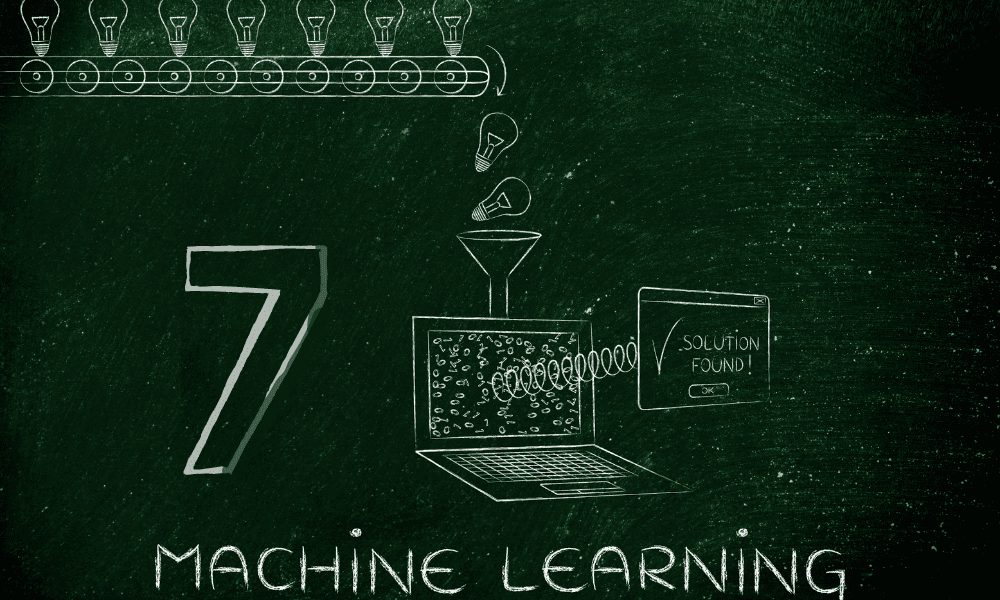
Editor’s Image
Data science is a varied and growing field, and your job as a data scientist can cover many tasks and objectives. Learning which algorithms work best in different scenarios will help you meet these disparate needs.
It’s virtually impossible to be an expert in all types of machine learning models, but you should understand the most common ones. Here are seven essential machine learning algorithms every data scientist should know.
Many companies prefer to use supervised learning models for their accuracy and simple real-world applications. While unsupervised learning is growing, supervised techniques are a great place to start as a data scientist.
1. Linear regression
Linear regression is the most fundamental model for predicting values based on continuous variables. It assumes that a linear relationship exists between two variables and uses it to plot results based on a given input.
With the right data set, these models are easy to train and deploy and relatively reliable. However, real-world relationships are typically not linear, so they have limited relevance in many business applications. It also doesn’t handle outliers well, so it’s not ideal for large, varied data sets.
2. Logistic regression
A similar but different machine learning algorithm that you should know about is logistic regression. Despite the similarity in name to linear regression, it is a classification algorithm, not an estimation one. While linear regression predicts a continuous value, logistic regression predicts the probability that the data falls into a given category.
Logistic regression is common for predicting customer churn, forecasting the weather, and projecting product success rates. Like linear regression, it is easy to implement and train, but is prone to overfitting and problems with complex relationships.
3. Decision trees
Decision trees are a fundamental model that you can use for classification and regression. They divide the data into homogeneous groups and continue segmenting it into more categories.
Since decision trees function like flowcharts, they are ideal for making complex decisions or detecting anomalies. However, despite their relative simplicity, they can take time to train.
4. Naive Bayes
Naive Bayes is another simple but effective classification algorithm. These models operate according to Bayes’ theorem, which determines the conditional probability — the probability of an outcome based on similar events in the past.
These models are popular in image and text-based classification. They may be too simplistic for real-world predictive analytics, but they are excellent in these applications and handle large data sets well.
Data scientists should also understand basic unsupervised learning models. These are some of the most popular in this less common but still important category.
5. K-means clustering
K-means clustering is one of the most popular unsupervised machine learning algorithms. These models classify data by grouping it into groups based on their similarities.
K-means clustering is ideal for customer segmentation. That makes it valuable for companies that want to refine marketing or speed up onboarding, so reducing your costs and churn rates in the process. It is also useful for anomaly detection. However, it is essential to standardize the data before feeding it to these algorithms.
6. Random forest
As you can guess from the name, random forests consist of multiple decision trees. Training each tree with random data and pooling the results allows these models to produce more reliable results.
Random forests are more resistant to overfitting than decision trees and are more accurate in real-world applications. However, that reliability comes at a cost, as they can also be slow and require more computing resources.
7. Decomposition of singular values
Singular value decomposition (SVD) models break down complex data sets into easier-to-understand bits by separating them into their fundamental parts and removing redundant information.
Image compression and denoising are some of the most popular applications for SVD. considering how file sizes keep growing, those use cases will become increasingly valuable over time. However, building and applying these models can be time-consuming and complex.
These seven machine learning algorithms are not an exhaustive list of what you can use as a data scientist. However, they are some of the most fundamental types of models. Understanding them will help boost your career in data science and make it easier to understand other, more complex algorithms that are based on these basic concepts.
april miller is editor-in-chief of consumer technology at Rehack Magazine. He has a track record of creating quality content that drives traffic to the publications I work with.






